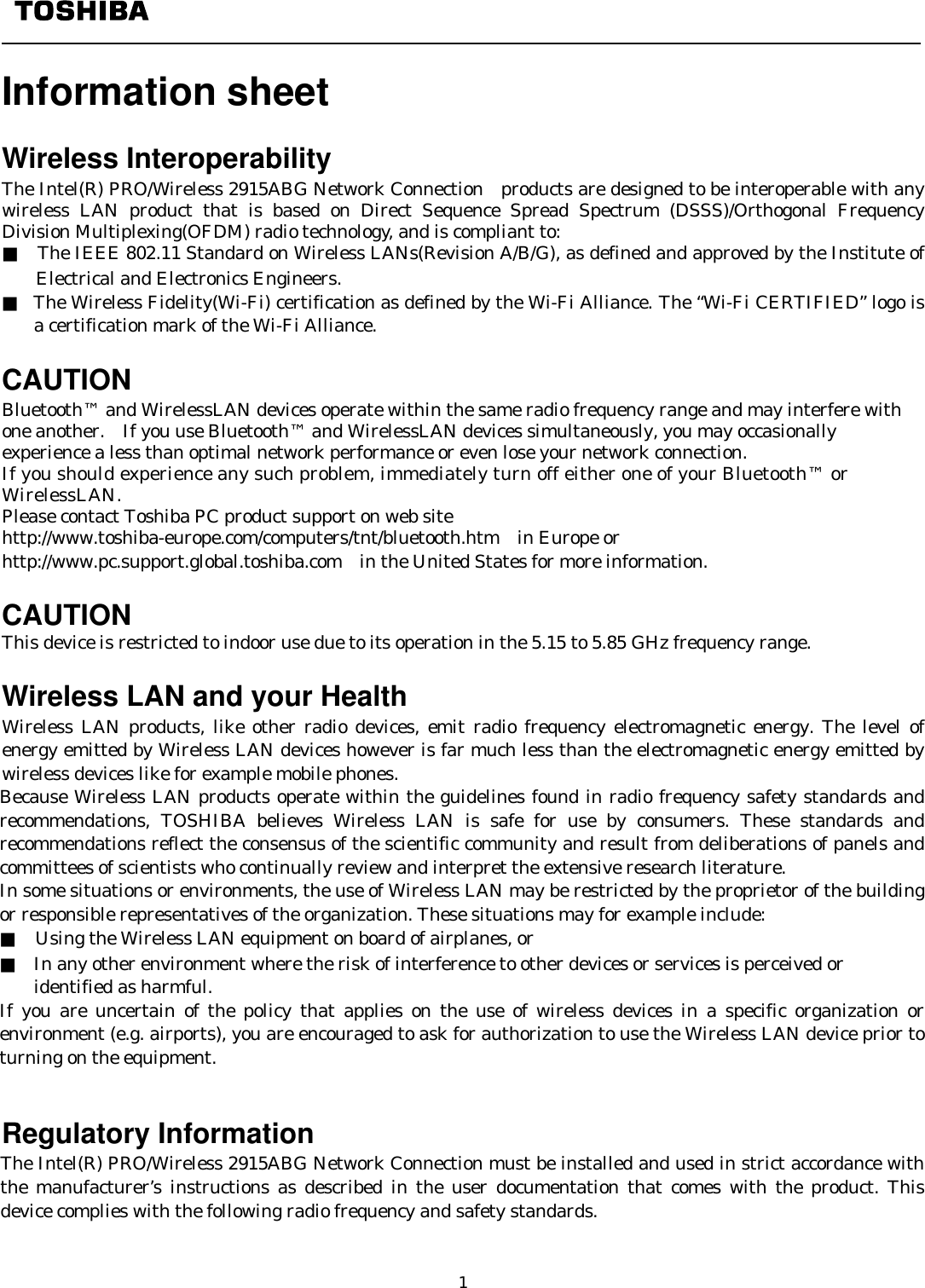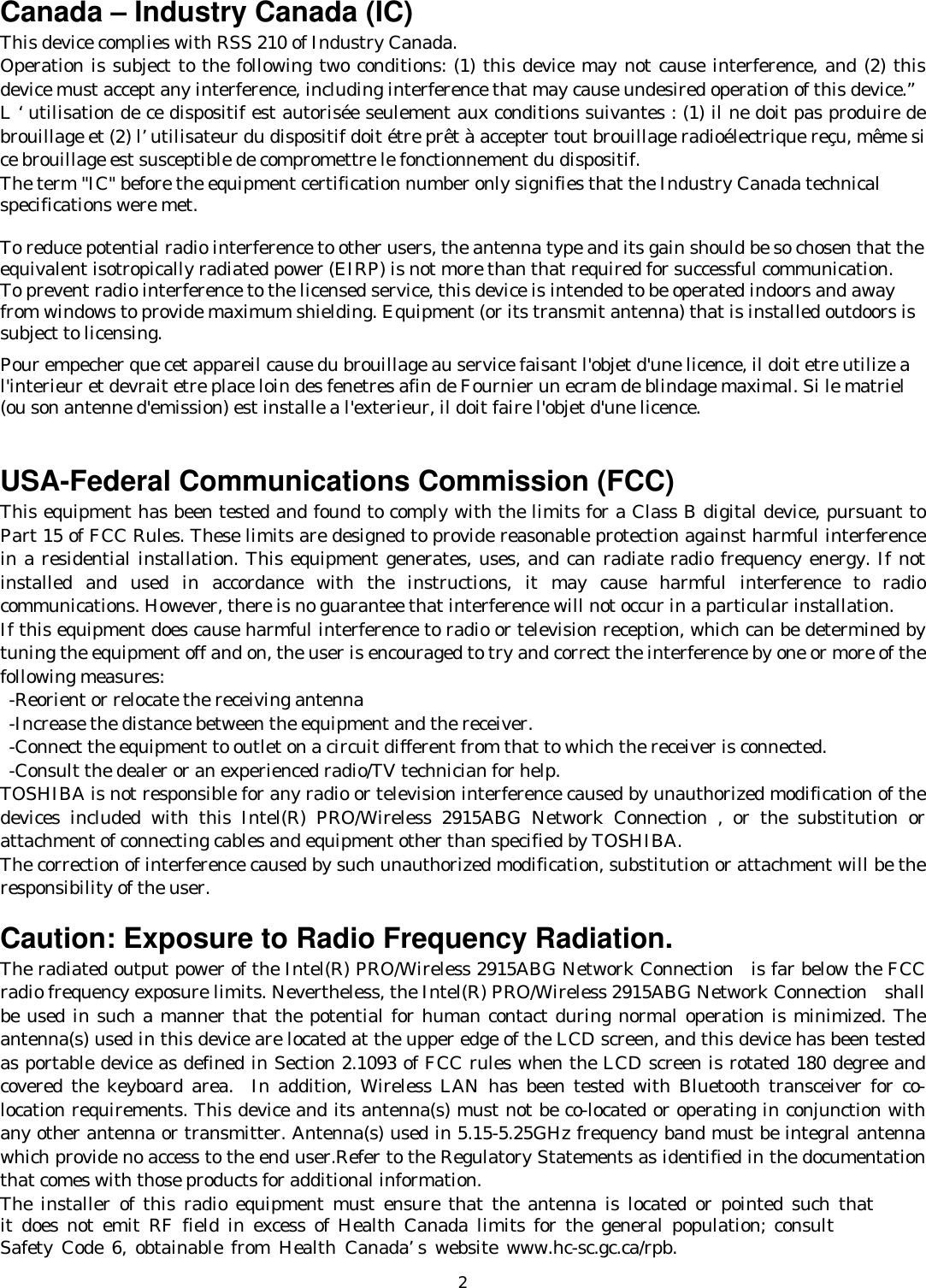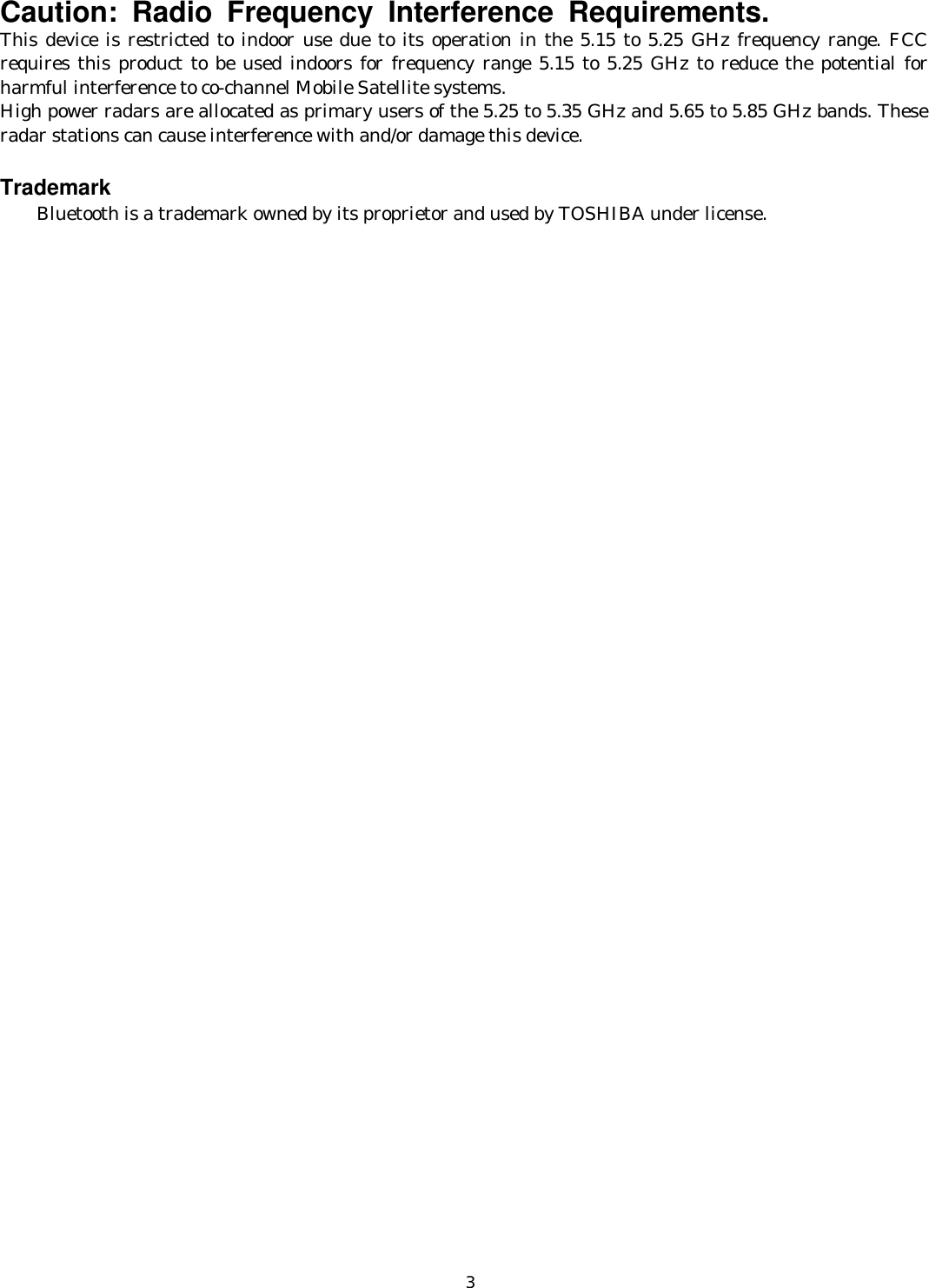Dynabook UPA3375WL 802.11a/b/g Mini PCI type 3B Card User Manual addendum
Toshiba Corporation 802.11a/b/g Mini PCI type 3B Card addendum
Dynabook >
Contents
- 1. User Manual Mini PCI Card
- 2. Portege M200 User Manual
- 3. User Manual addendum
User Manual addendum


